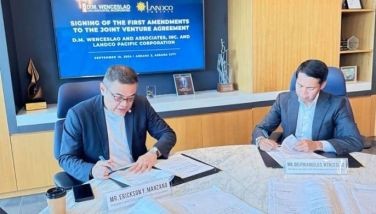Tinga proclaimed in Taguig
Treatment for the symptoms of Parkinson’s disease has come a long way since it was first identified in the 1800s by London doctor James Parkinson.
From the 1960s when the chemical differences in the brains of those suffering from the disease were first discovered, doctors have worked non-stop to treat it.
“Though we have still yet to find a cure for Parkinson’s, advances in science and technology have helped find means in effectively controlling its symptoms,” says Dr. Dominic Jamora of the Philippine Movement Disorder (PhilMove) team, which successfully conducted the first deep-brain stimulation (DBS) treatment in the Philippines as a cure for the symptoms of Parkinson’s disease.
The treatment, known as the Activa Parkinson’s Control Therapy, has already helped thousands of patients from Europe, Canada, Australia and the United States.
Recently, the PhilMove team successfully conducted the first successful DBS treatment in the Philippines.
While Parkinson’s disease has been recognized as a medical condition only in the 1900s, it had already been known since the ancient times. In 175 AD, Galen identified it as “shaking palsy,” perhaps due to the tremors that it causes its sufferers.
Some of the other symptoms of Parkinson’s include slowness of movement, stiffness or rigidity of muscles, freezing, excessive movement, and fidgeting, among others.
“This is due to the low levels of dopamine, which cause the degeneration of nerve cells in the part of the brain called the substantia nigra. The motor circuit slows down and results in the symptoms of Parkinson’s disease,” says Jamora.
The discovery of the chemical abnormalities in the brains of Parkinson’s disease patients in the 1960s led to the development of Levodopa, a drug which helped increase the brain’s dopamine levels. The drug, though, wasn’t enough, especially for patients who have become already immune to the drug over time.
The 1960s also saw physicians trying out electrical stimulation as a way to locate the specific areas in the brain that are affected by the loss of dopamine. It was through these tests that eventually led them to discover that deep-brain stimulation (DBS) can actually help suppress the symptoms of Parkinson’s disease.
It was in the 1980s when the most successful DBS technology was introduced by Medtronic — Activa Parkinson’s Control Therapy.
Activa Parkinson’s Therapy involves the surgical implantation of an electrode deep within the brain. The electrodes are connected to a battery-operated pulse generator that is embedded underneath the skin of the chest and generates electrical currents that are delivered to the targeted area in the brain. Turning on the pulse generator alleviates the patient’s symptoms such as muscle stiffness or slowness of movement, tremor and other unnecessary movements.
Activa Parkinson’s Control Therapy safely and noticeably suppresses many of the primary symptoms of the disease through a mild electrical stimulation to an area of the brain called the thalamus.
The electrical impulses originate from an impulse generator implanted underneath the collarbone. The control therapy can treat bilateral symptoms with a single implanted impulse generator (Kinetra). It is also adjustable according to the patient’s needs.
“Doctors and researchers are working overtime to find a cure for Parkinson’s disease. And while we still have to wait for that, these therapies remain to be the safest and most effective in controlling its symptoms,” says Jamora.
* * *
For more information on the Activa Parkinson’s Control therapy, call PhilMove at 726-0776 or 723-7575 or e-mail at [email protected].
- Latest


























